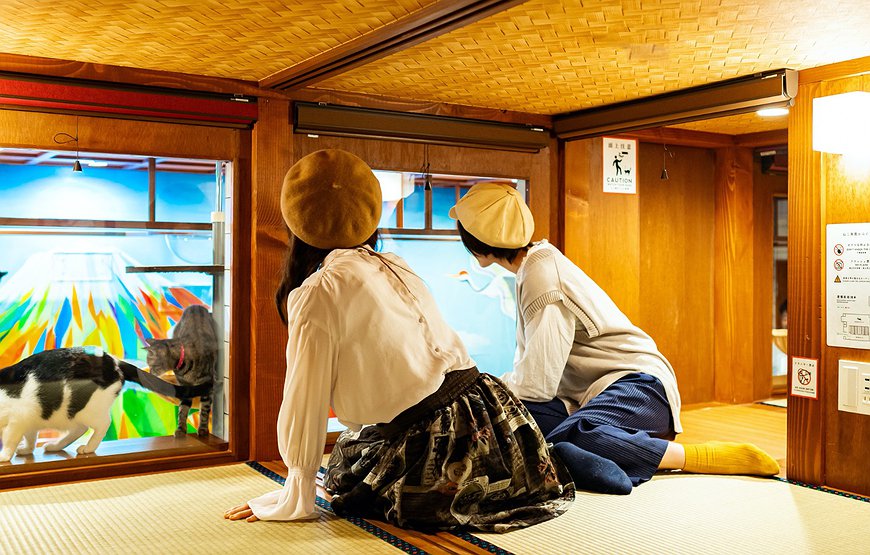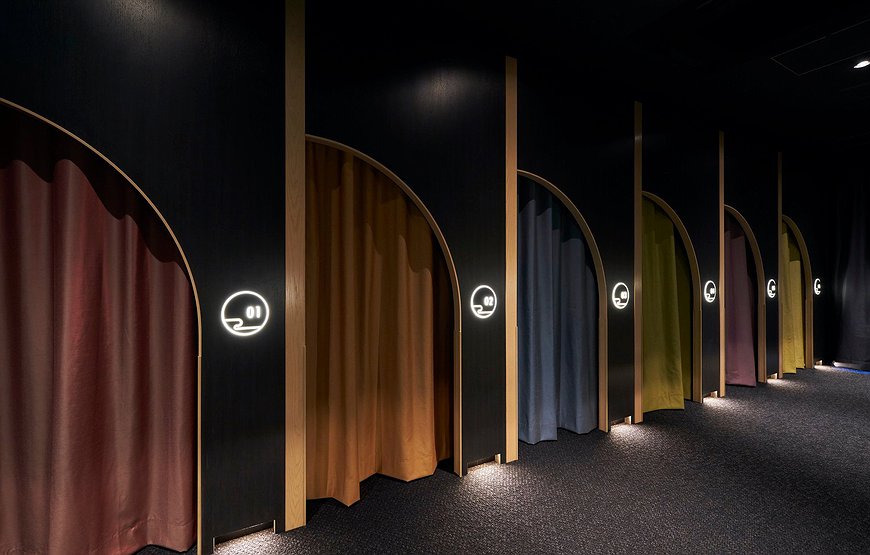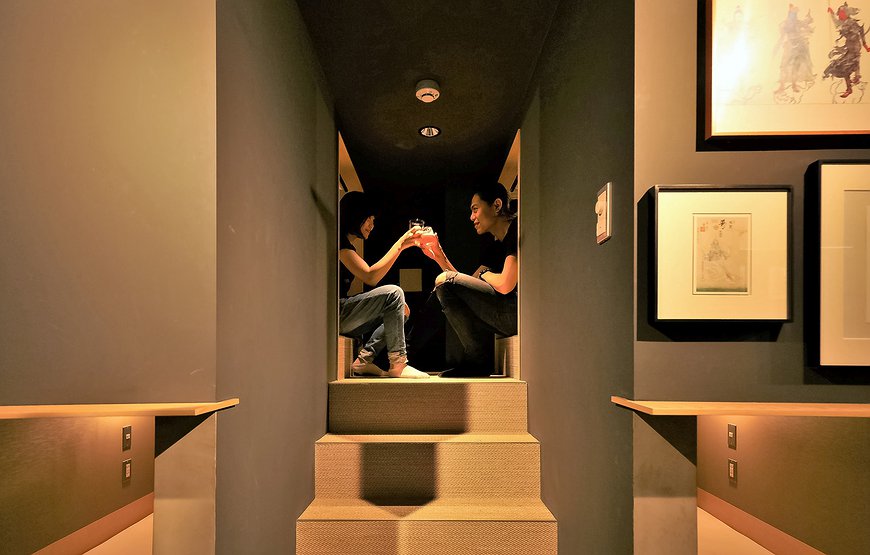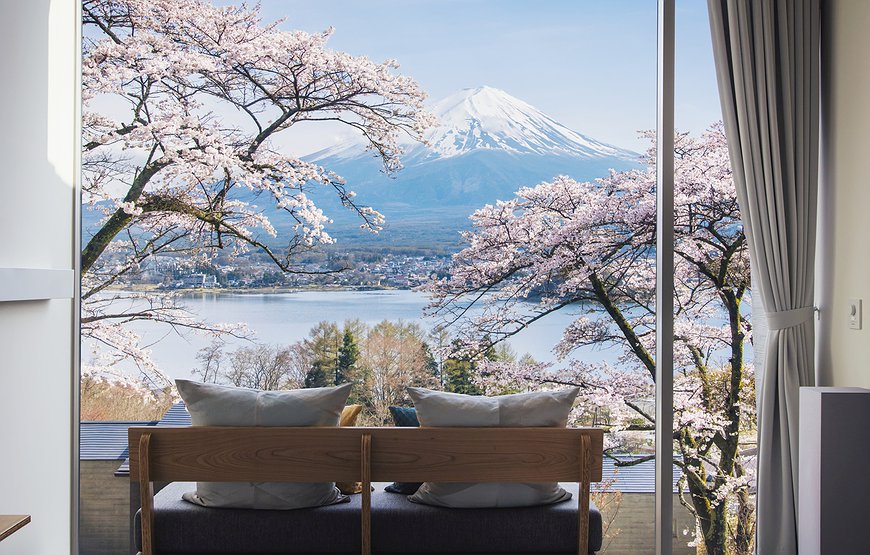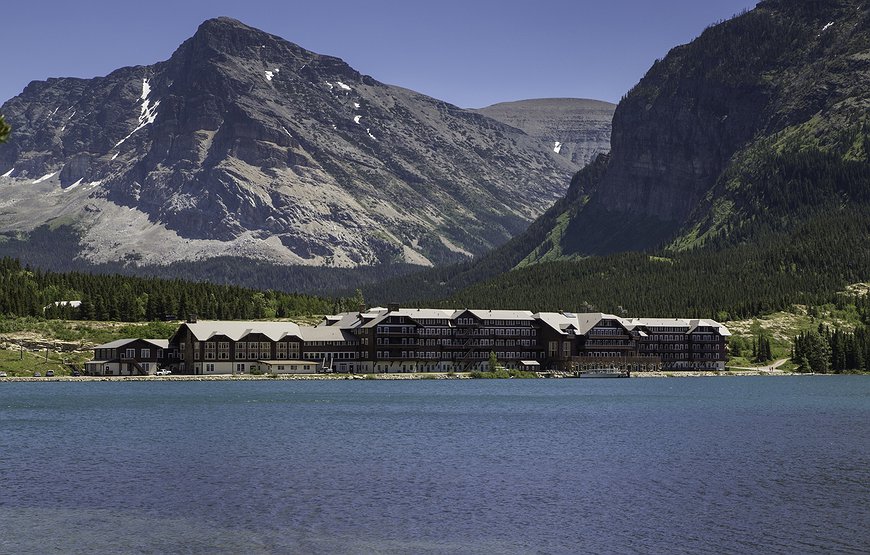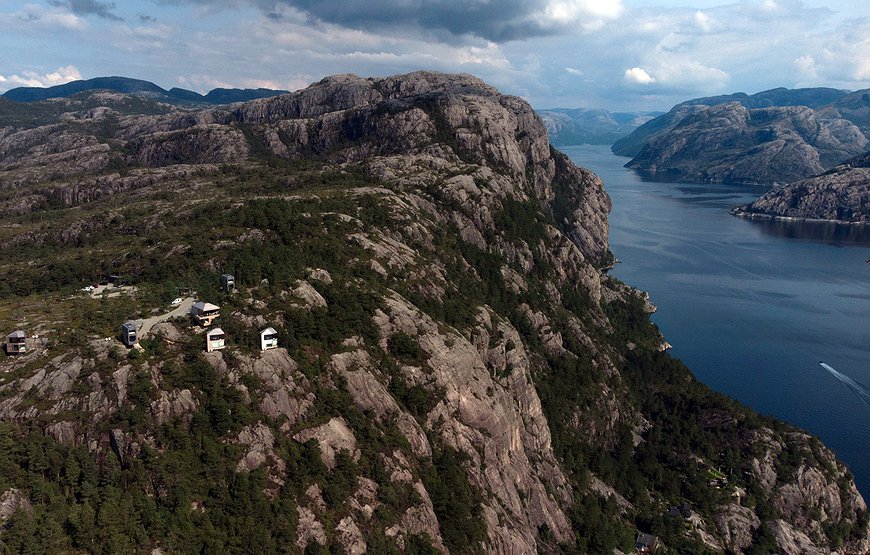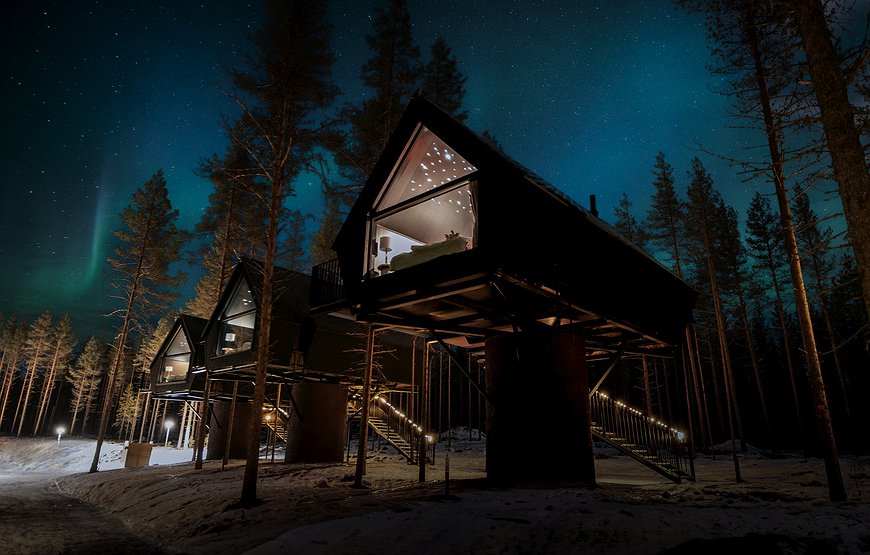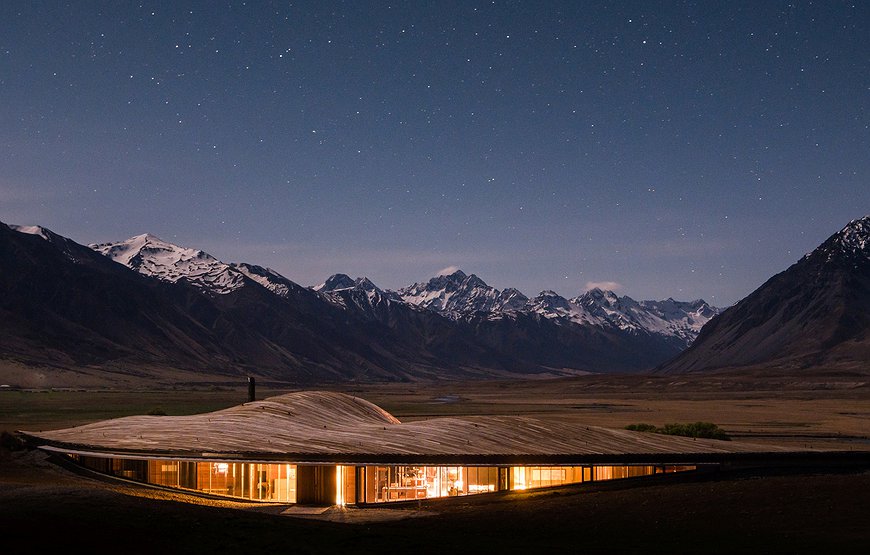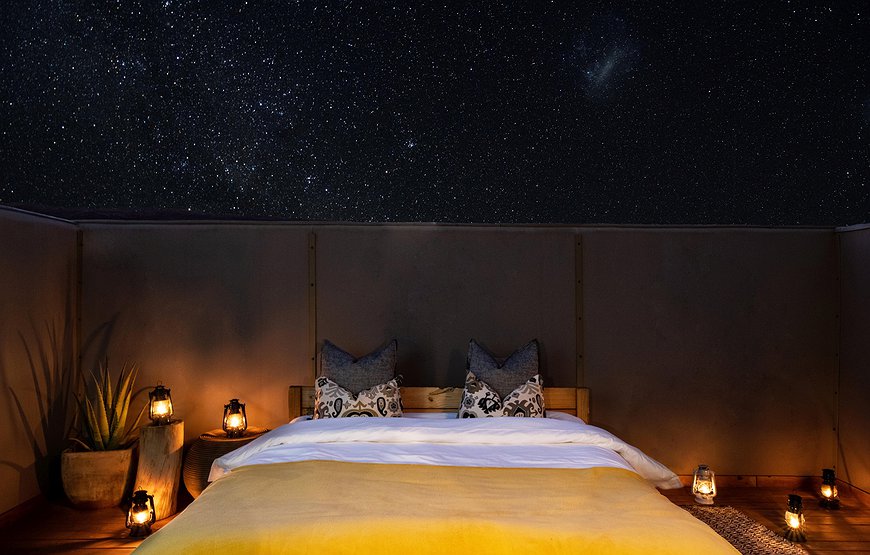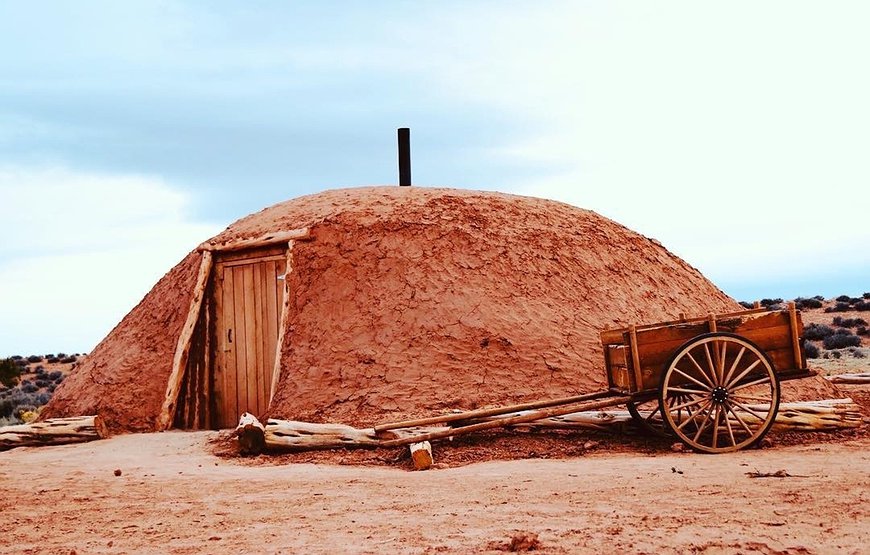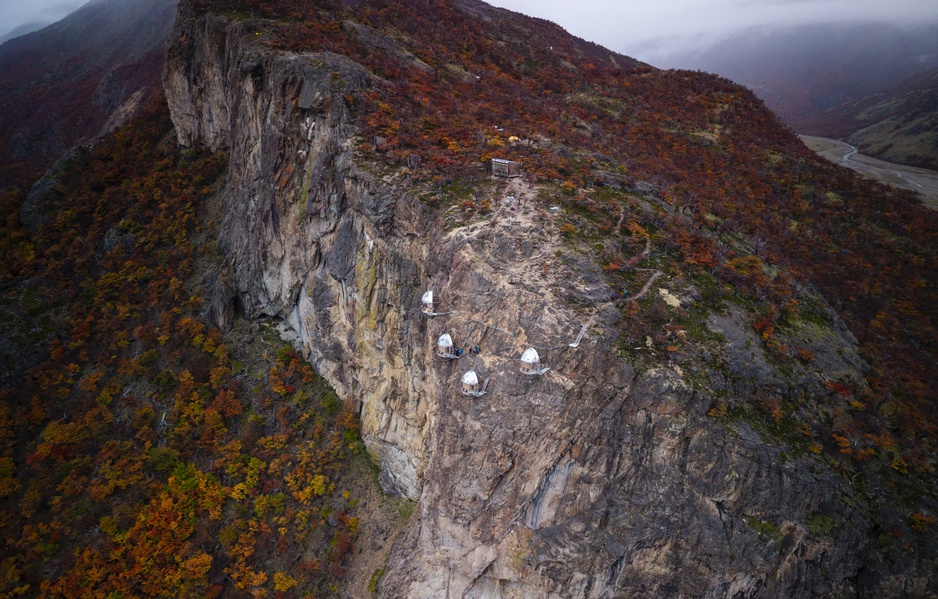
Fancy spending the night dangling off a cliff face in Argentine Patagonia? OVO Patagonia has opened four transparent capsules bolted to a rock wall, offering what might be the most vertigo-inducing accommodation experience on the planet. This isn't glamping – it's something altogether more unhinged.
The concept is simple, if slightly mad: suspend guests in polycarbonate pods 270 metres up a sheer rock face, give them a bed, a bathroom, and 360-degree views of Mount Fitz Roy, then leave them there overnight to contemplate their life choices while condors glide past at eye level. Created by high-line walker Ezequiel Ruete and architect Luis Aparicio – who apparently spend their spare time walking tightropes between mountain faces – the project took three years to engineer and required hauling two-ton capsules up a mountain using an aerial elevator.
The company's slogan is "get out of your comfort zone in comfort," which is one way of describing sleeping in a transparent egg strapped to a cliff in one of the windiest places on Earth. You'll need to be over 16, reasonably fit, comfortable with heights, and willing to clip into a via ferrata to reach your room. What you get in return is an experience that's part luxury hotel, part Alpine survival exercise, and entirely unlike anything else.
The Setting
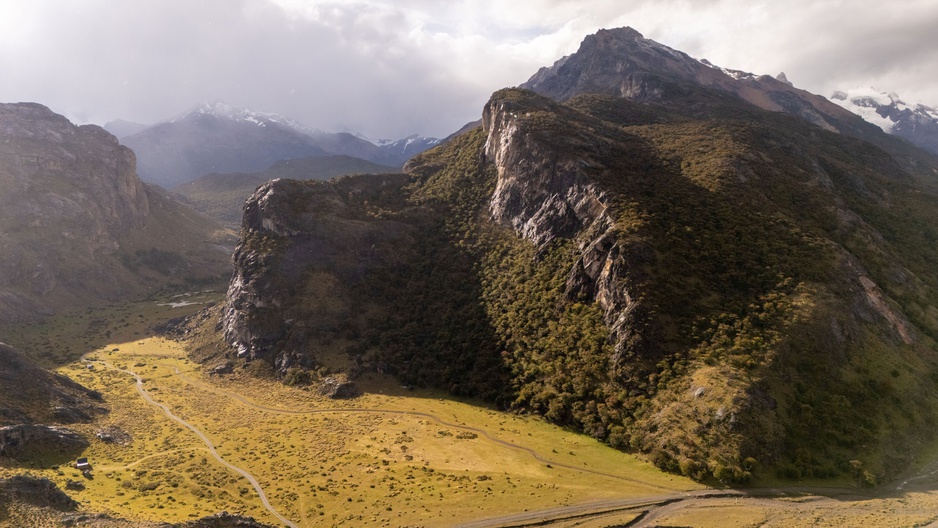
The capsules sit 270 metres up a mountain face at Estancia Bonanza, near El Chaltén in southern Argentina. This is proper Patagonia – a landscape defined by extremes. Mount Fitz Roy, at 3,405 metres, dominates the skyline across the valley, its granite needles rising from the Southern Patagonian Ice Field along the Argentina-Chile border in Los Glaciares National Park. The mountain's imposing northeast face presents a wall of vertical rock that climbers have been testing themselves against for decades.
The surrounding terrain is classic Patagonian wilderness: native lenga forest carpets the lower slopes, giving way to exposed rock and glacial valleys higher up. The Río de las Vueltas cuts through the landscape below, its glacial-fed waters tumbling down from the ice fields. Hills and glaciers ring the valley, and the scale of everything is vast – the kind of landscape that makes you feel properly small.
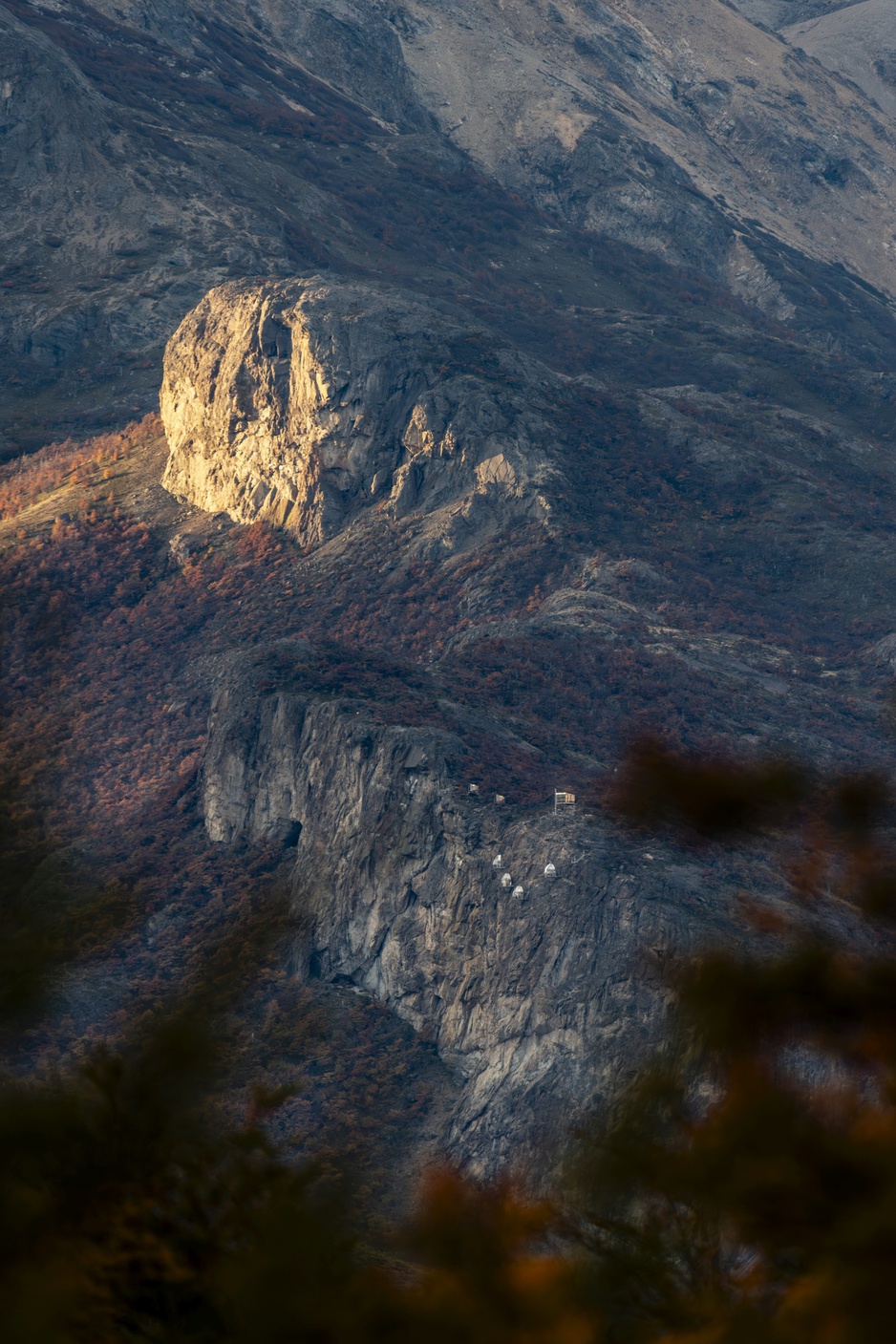
Wind is the defining force here. Patagonian gusts are legendary, regularly exceeding 60 miles per hour, and the weather changes rapidly. One moment you're bathed in sunshine, the next you're watching storm clouds race in from the west. Rain is frequent, and the temperature can drop sharply even in summer. The capsules were specifically designed as a refuge from these elements – a way to experience Patagonia's raw power from a position of relative comfort and safety.
Wildlife thrives despite the harsh conditions. Condors – massive birds with three-metre wingspans – soar on the thermals, often passing at eye level with the capsules. Pumas hunt in the forests below, though you're unlikely to spot one. Huemules, an endangered Andean deer, inhabit the remoter valleys. This is wilderness in its purest form, largely unchanged since before humans arrived.
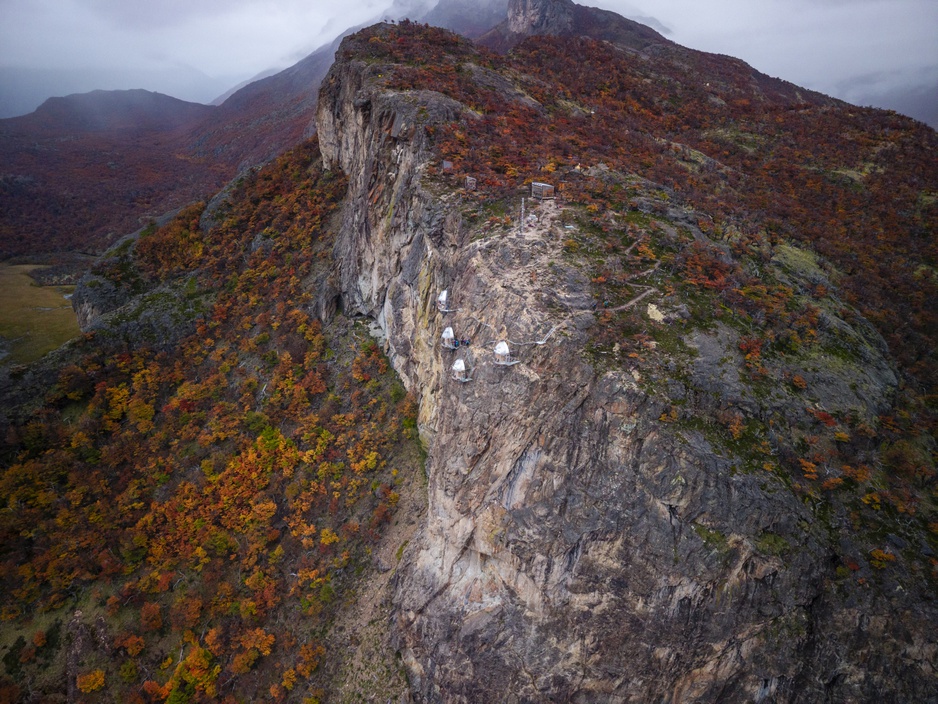
The location itself is remote. El Chaltén, the nearest town and Argentina's self-proclaimed trekking capital, only has around 2,000 permanent residents. It sits at the northern end of Los Glaciares National Park, which protects nearly 730,000 hectares of ice fields, glaciers, forests and mountains. The park is a UNESCO World Heritage Site, recognized for its outstanding natural beauty and glaciological significance.
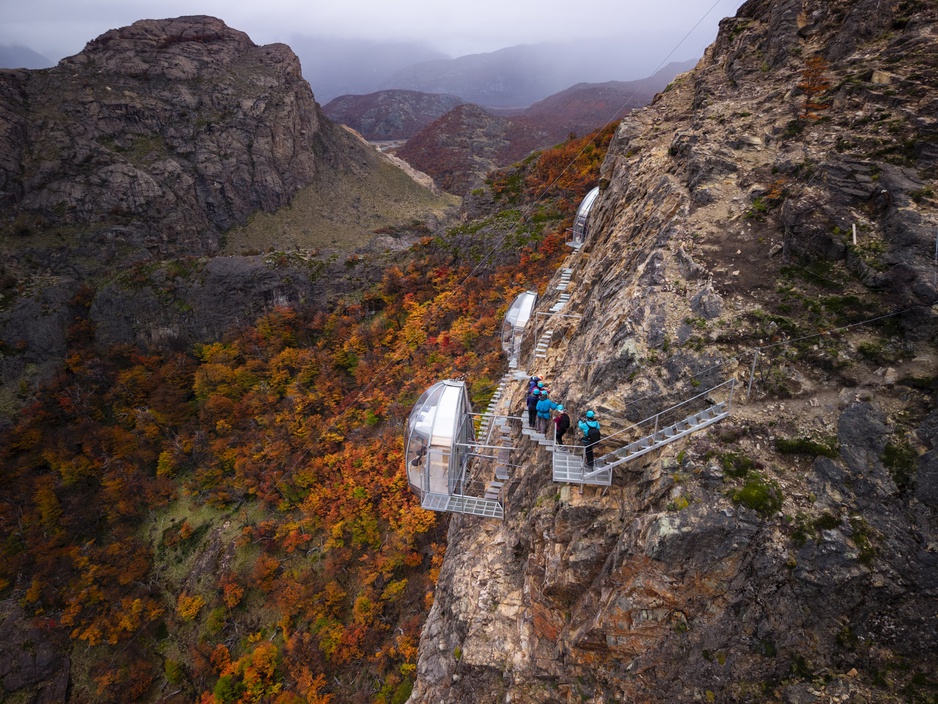
Getting There
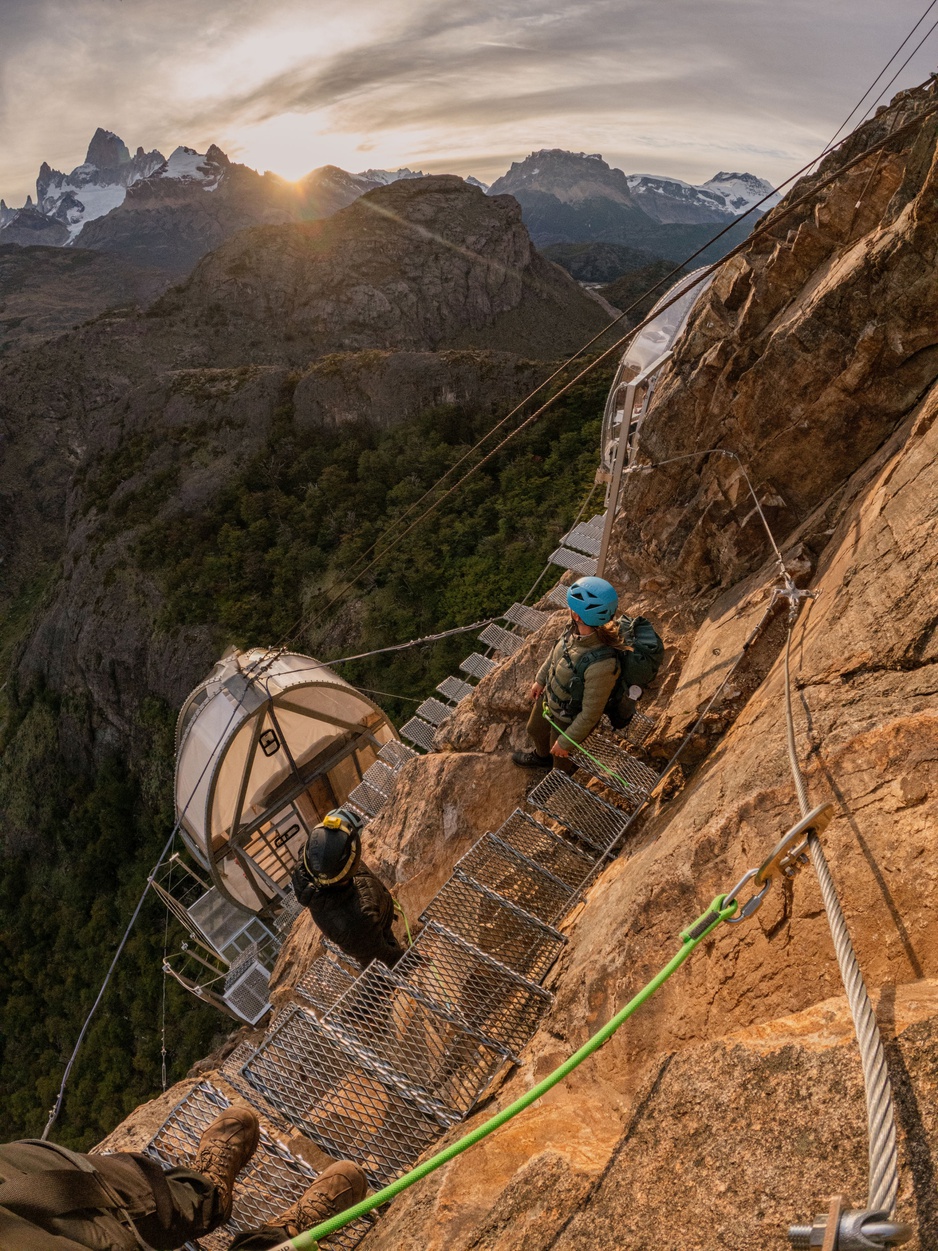
Your journey begins in El Chaltén, where you'll transfer by 4x4 to Estancia Bonanza, 12 kilometres away along Provincial Route 41. The road follows the Río de las Vueltas valley, winding through native forest with views of the surrounding peaks and glaciers opening up as you travel. From there, it's a one-hour trek through native lenga forest, covering 2.5 kilometres with 300 metres of elevation gain. You'll cross a suspension bridge over the Río de las Vueltas before the path winds upward through the trees.
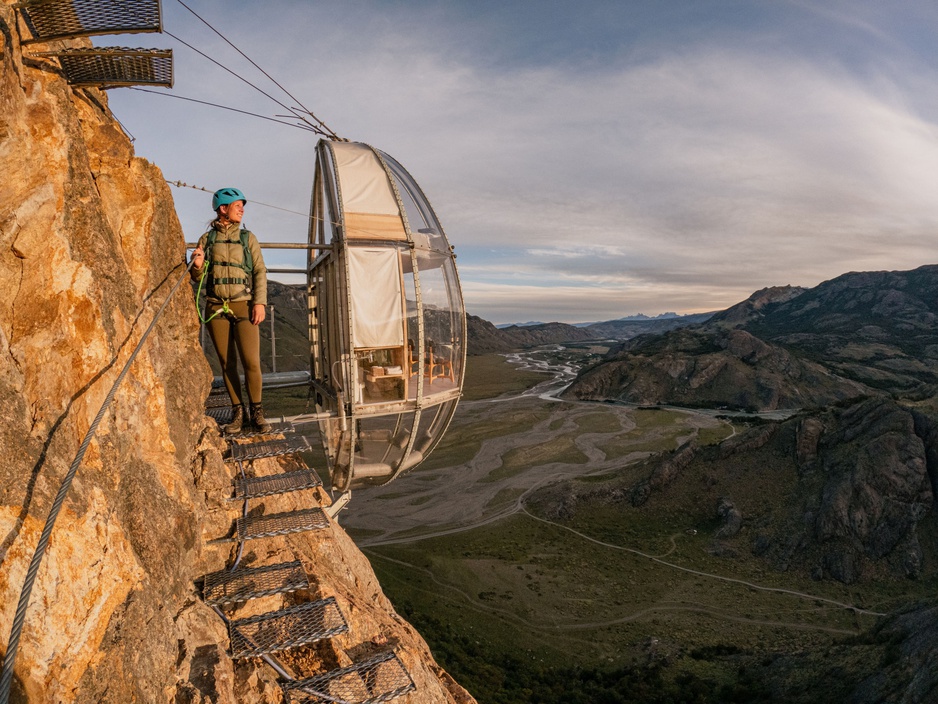
At the refuge near the summit, mountain guides fit you with harnesses and safety equipment. Then comes the via ferrata – a protected climbing route with metal rungs, steps and cables fixed into the rock face. It's not technically difficult, but it is very high. The five-minute descent along the via ferrata brings you face to face with your capsule, dangling in space.
The Capsules
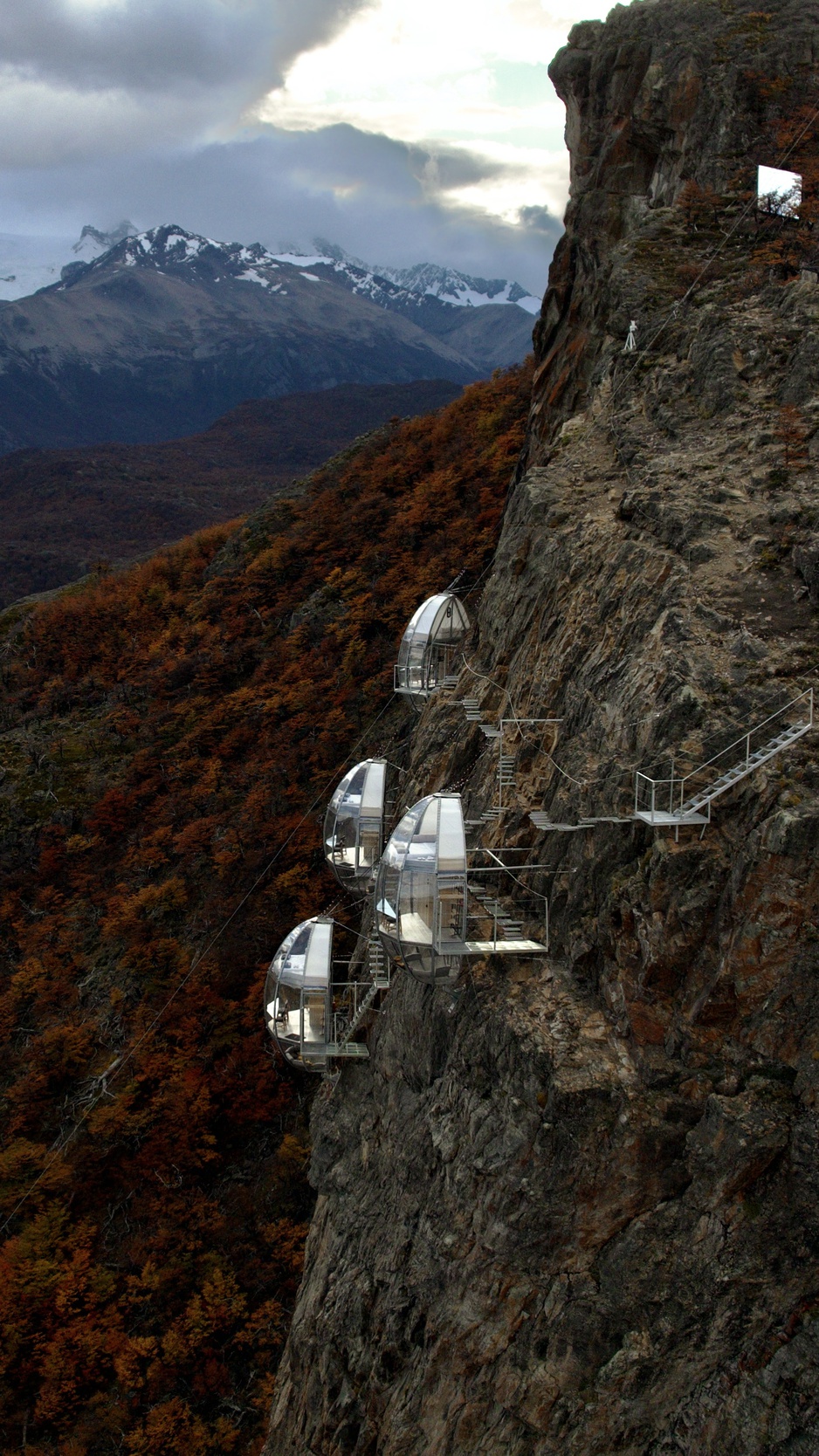
Each polycarbonate pod weighs roughly two tons and is anchored to the rock by nine separate fixing points, each capable of supporting 35 tons. The engineering team spent three years on design and testing, running wind simulations and studying condor flight paths before construction. They used an aerial elevator system to haul materials up the mountain, avoiding the environmental damage of building access roads.
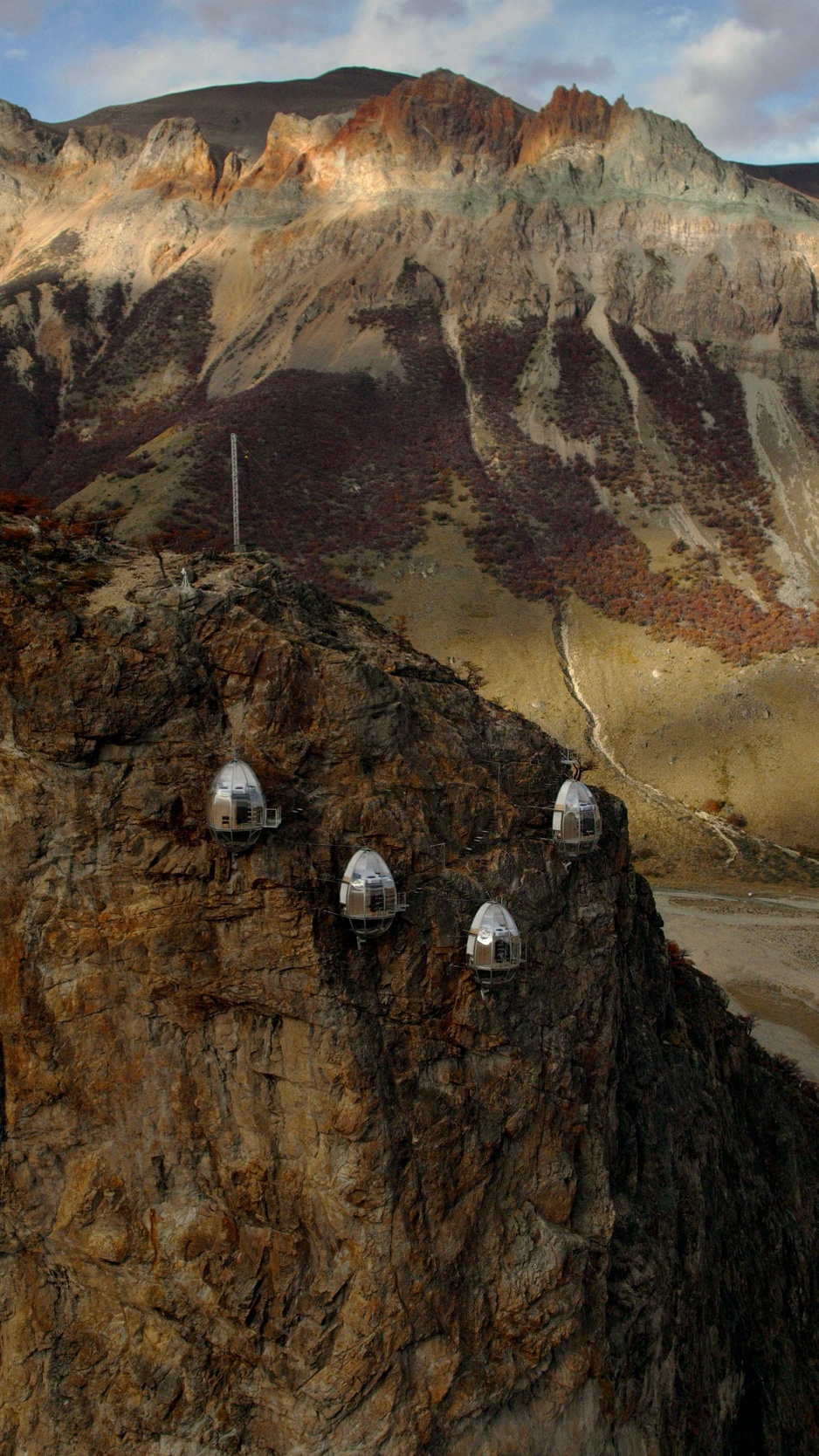
The capsules are built to withstand winds up to 115 miles per hour, though OVO will reschedule your stay if gusts exceed 60 miles per hour. Two overlapping structural stabilization systems ensure redundancy – the capsules might sway slightly in strong winds, but they're not going anywhere.
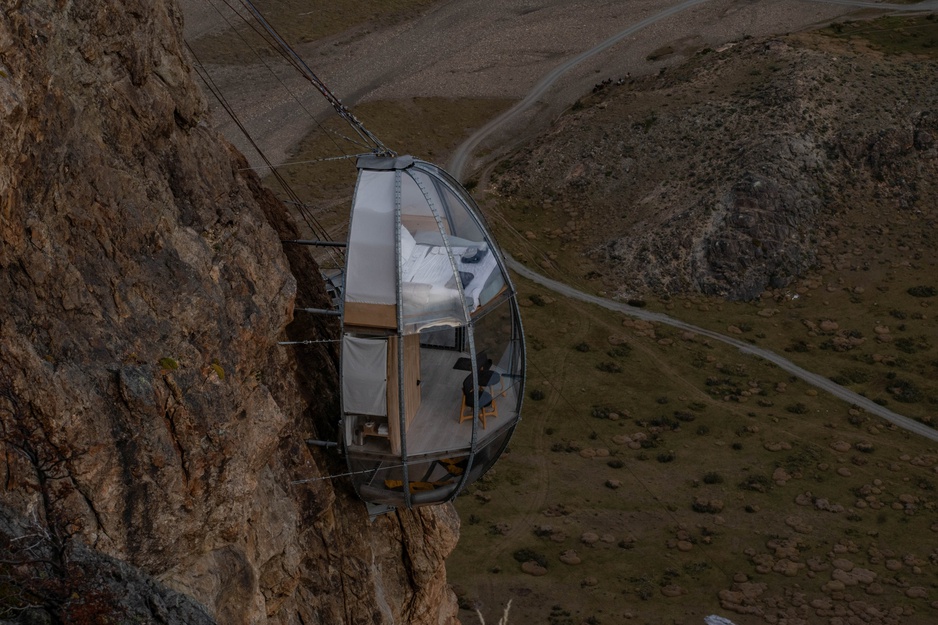
The transparent walls offer 360-degree views from every level, with windows that open for cross-ventilation. Curtains provide privacy when needed, though you're 270 metres up a cliff, so privacy isn't really an issue.
Inside the Capsule
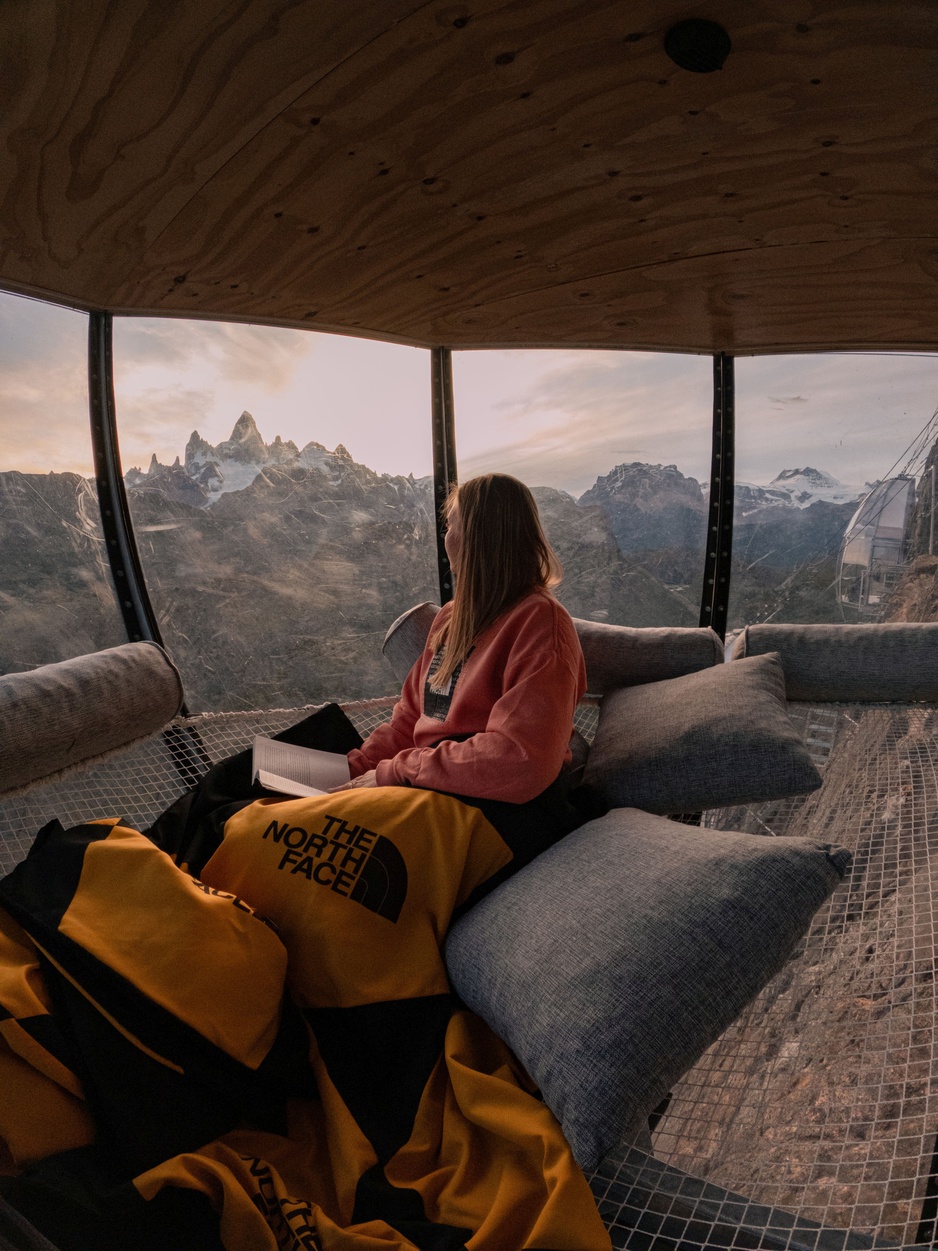
The lowest level has a large hammock-like net
You enter through the middle level into a minimalist living area. It's compact but well-designed, with a small dining table and seating. Solar panels provide electricity, and there's satellite WiFi, though you're encouraged to disconnect. A tablet inside the capsule gives you weather information and lets you contact the guides via walkie-talkie.
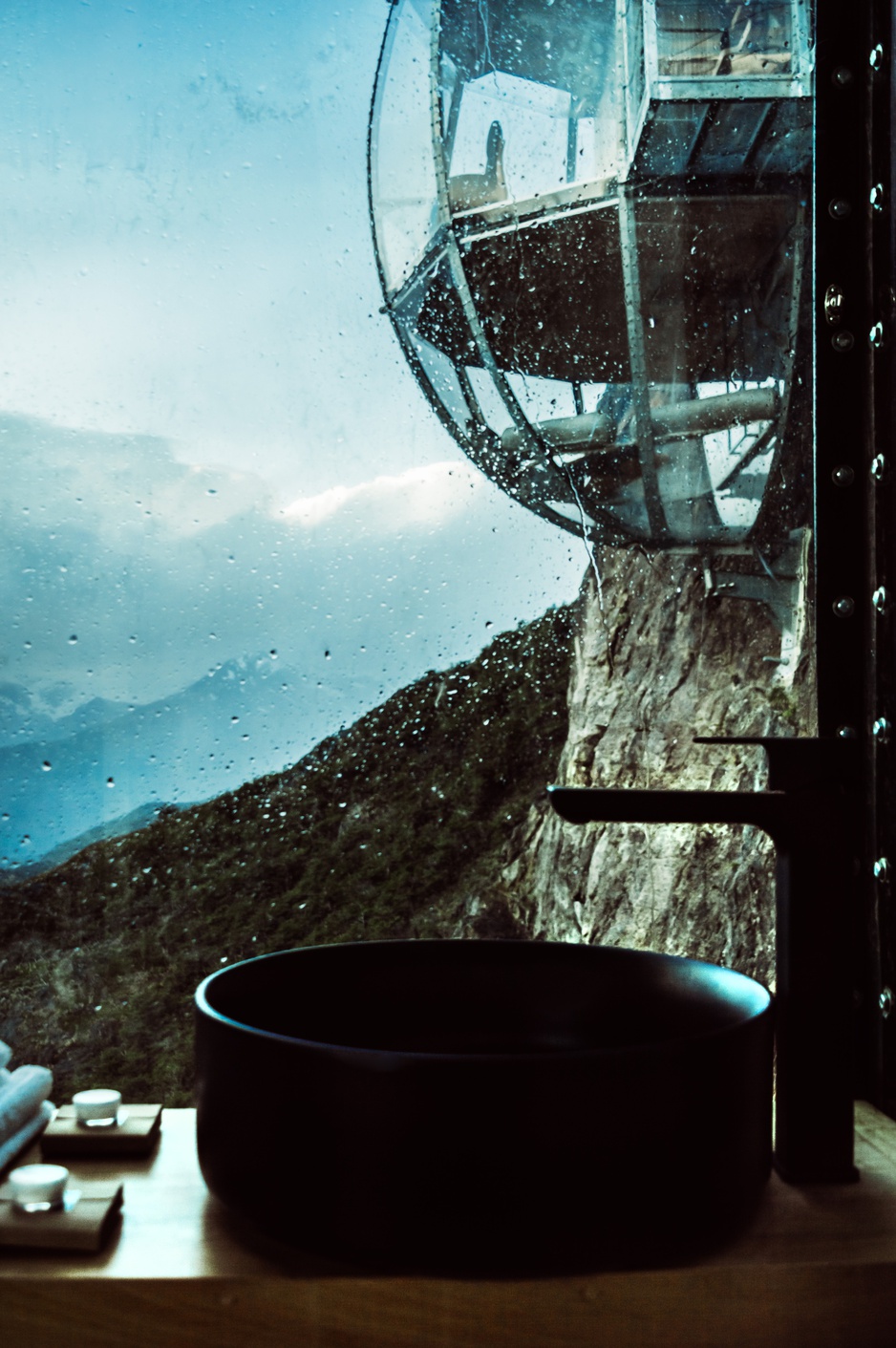
Bathroom with a view
The bathroom, located on the middle level, includes a vanity with running water and a dry composting toilet. You'll find biodegradable toiletries provided, and while it's basic, it functions perfectly well at altitude. Hot showers are available back at the base lodge at Estancia Bonanza.
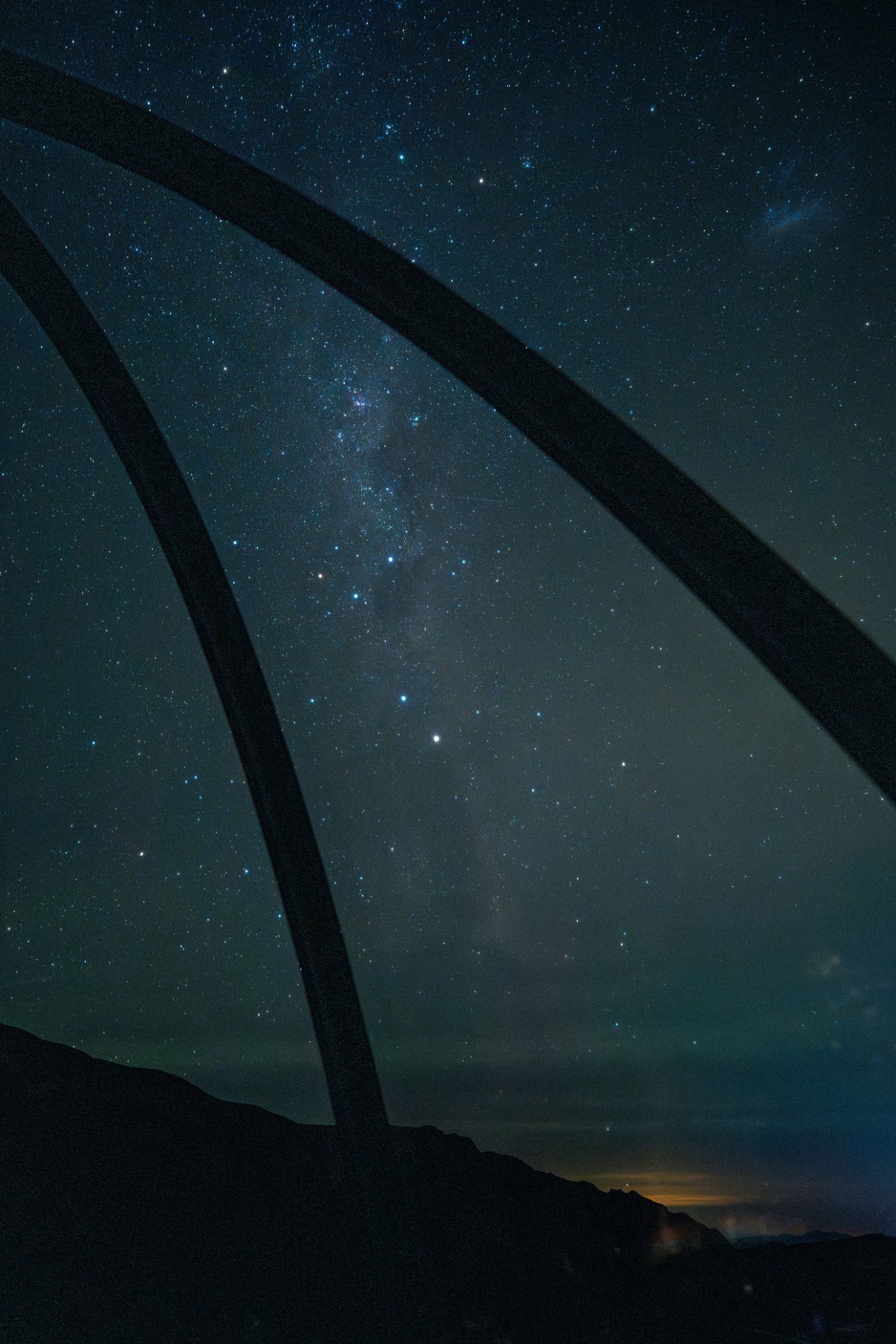
If luck is on your side and the weather is kind, the night sky will unveil a blanket of stars untouched by light pollution
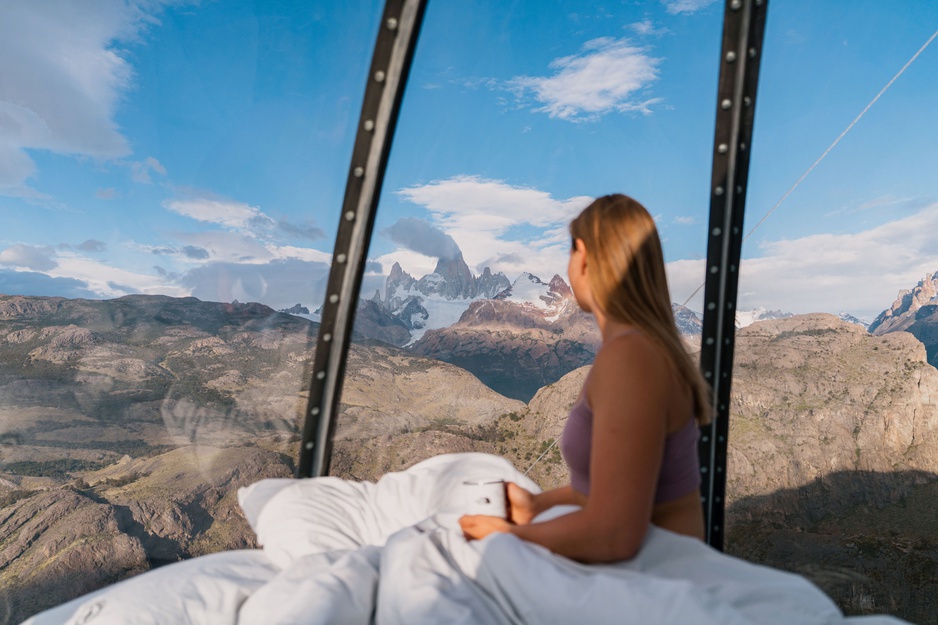
Climb the ladder to the upper level and you'll find a double bed that fills most of the floor space. Electric blankets are available on request, and the transparent ceiling means you'll fall asleep watching stars wheel overhead. Curtains can block out the dawn light, though you'll probably want to watch the sunrise illuminate Fitz Roy's granite walls.
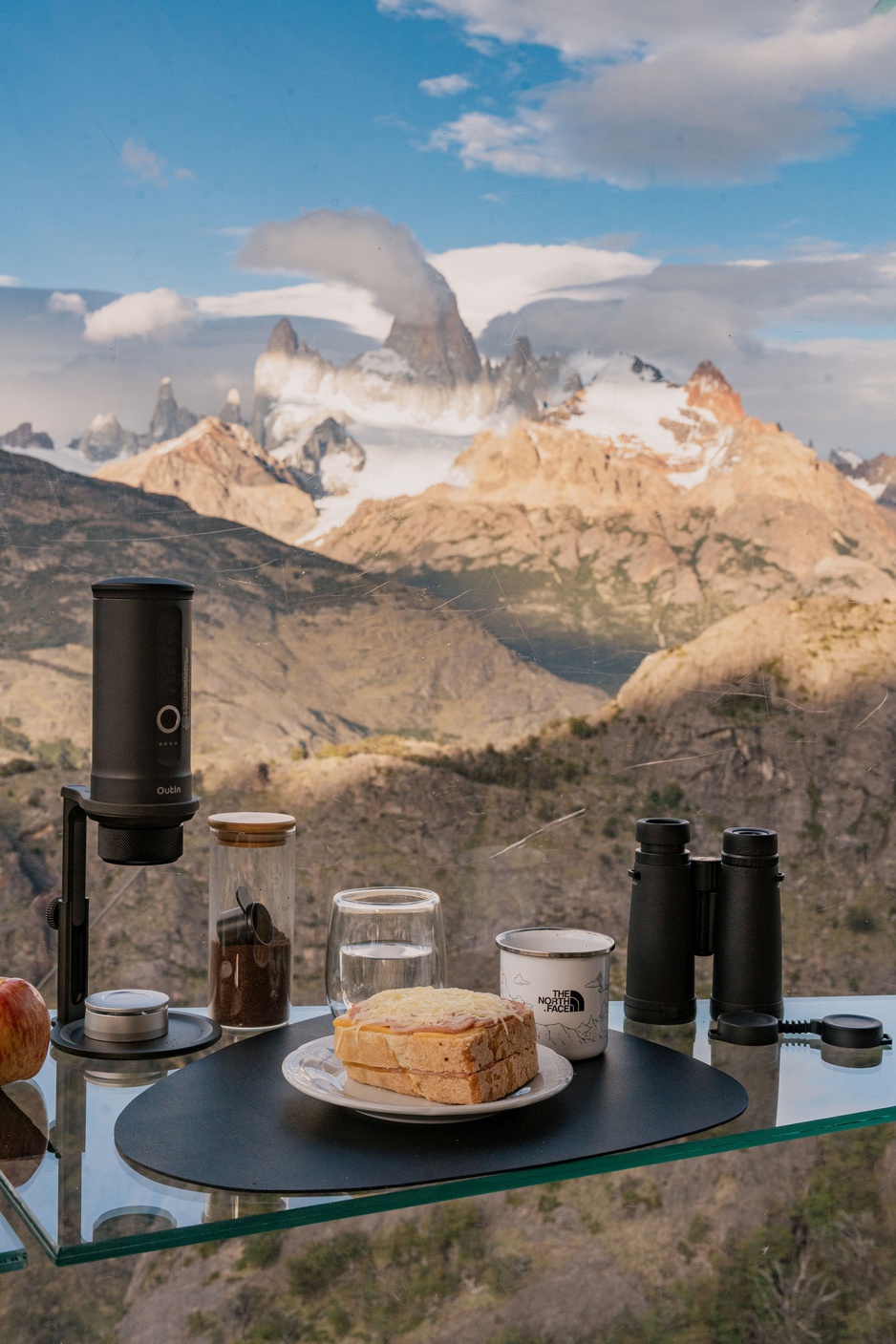
Your mountain guide delivers breakfast around 8am, walking along the via ferrata to reach your capsule. Expect a proper meal – this isn't a protein bar situation. The overnight package includes dinner the previous evening, along with a charcuterie or vegan board on arrival, and a selection of alcoholic and non-alcoholic drinks. Coffee and tea are stocked in the capsule's minibar.
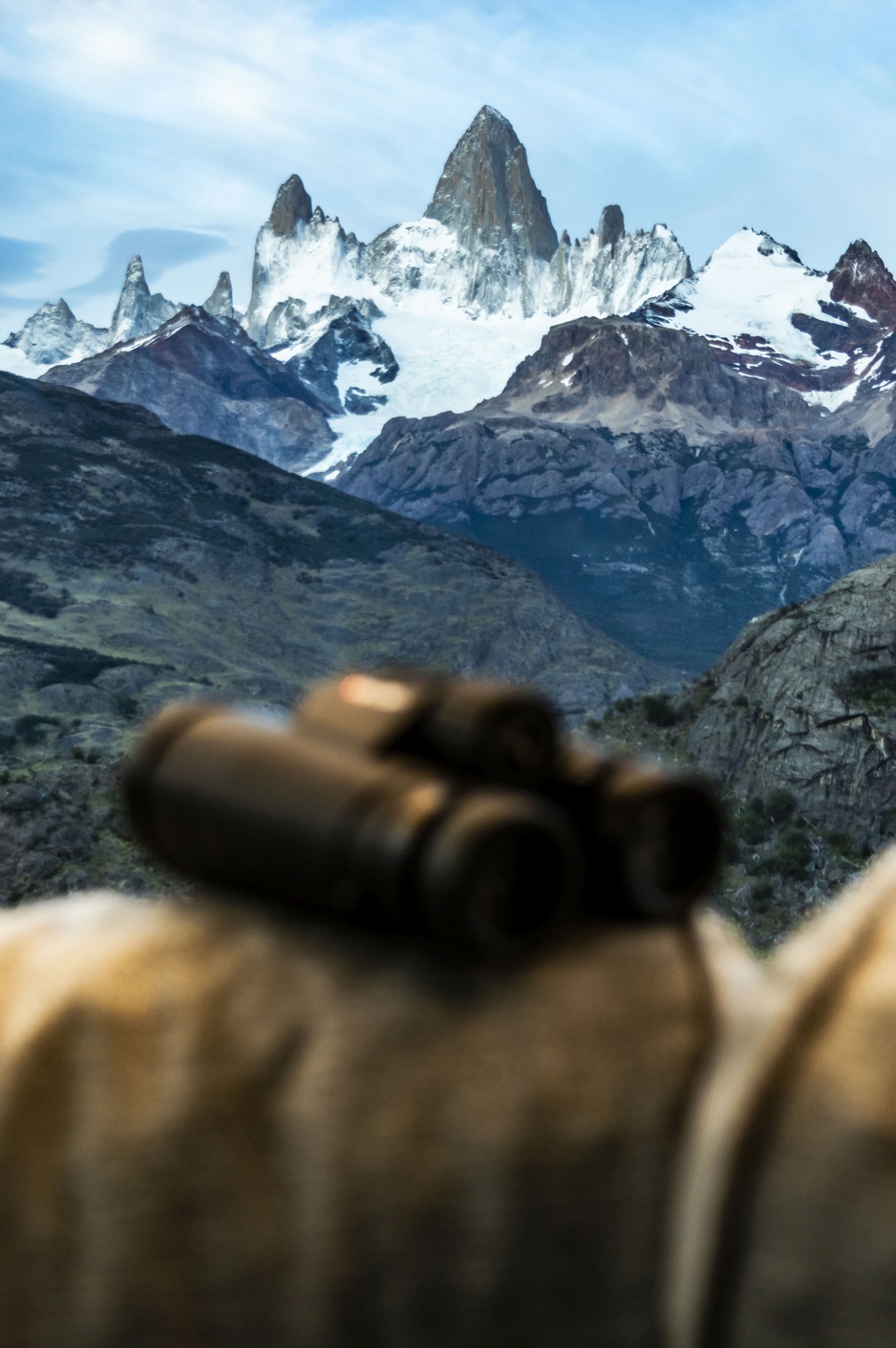
The panorama from the capsule is extraordinary. Mount Fitz Roy dominates the skyline, its peripheral granite needles catching the light as the sun moves across the sky. Below, the Río de las Vueltas valley spreads out in shades of green and grey. You can watch weather systems roll in across the Andes, and at night, the Patagonian sky puts on a show unimpeded by light pollution. The bottom level of the capsule features a net stretched across the floor – lie here and you're essentially suspended in mid-air, 270 metres of empty space beneath you.
Hiking Options
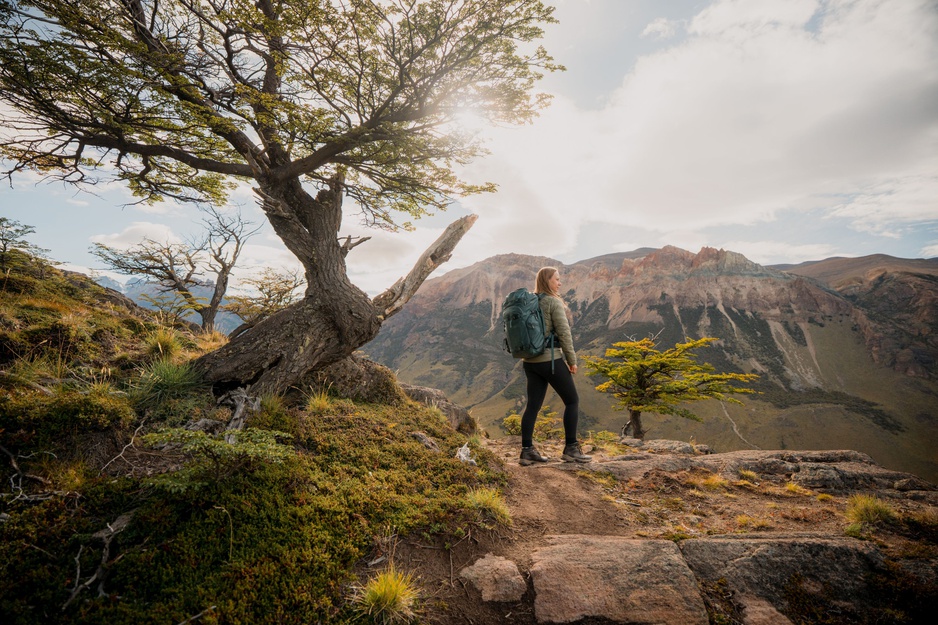
El Chaltén is Argentina's trekking capital, and you're spoilt for choice. The Laguna de los Tres trail leads to a glacial lake directly beneath Fitz Roy – it's a challenging day hike but worth every step. Laguna Torre offers similar drama with views of Cerro Torre.
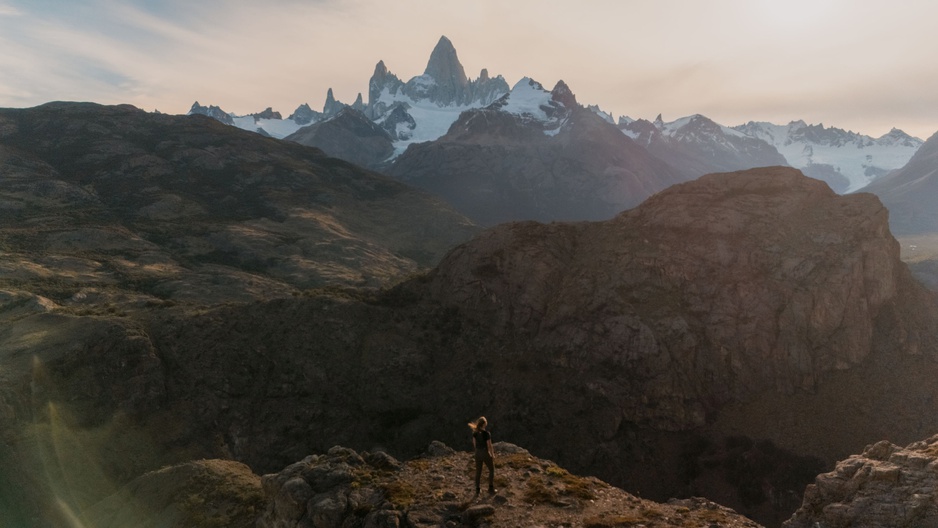
For something less strenuous, the Chorrillo del Salto waterfall trail makes a pleasant afternoon walk. All trails wind through southern beech forest before breaking out above the treeline into classic Patagonian scenery of rock, ice and wind-scoured peaks.
ruta 23 Km 12, Z9301 El Chalten, Santa Cruz, Argentina

